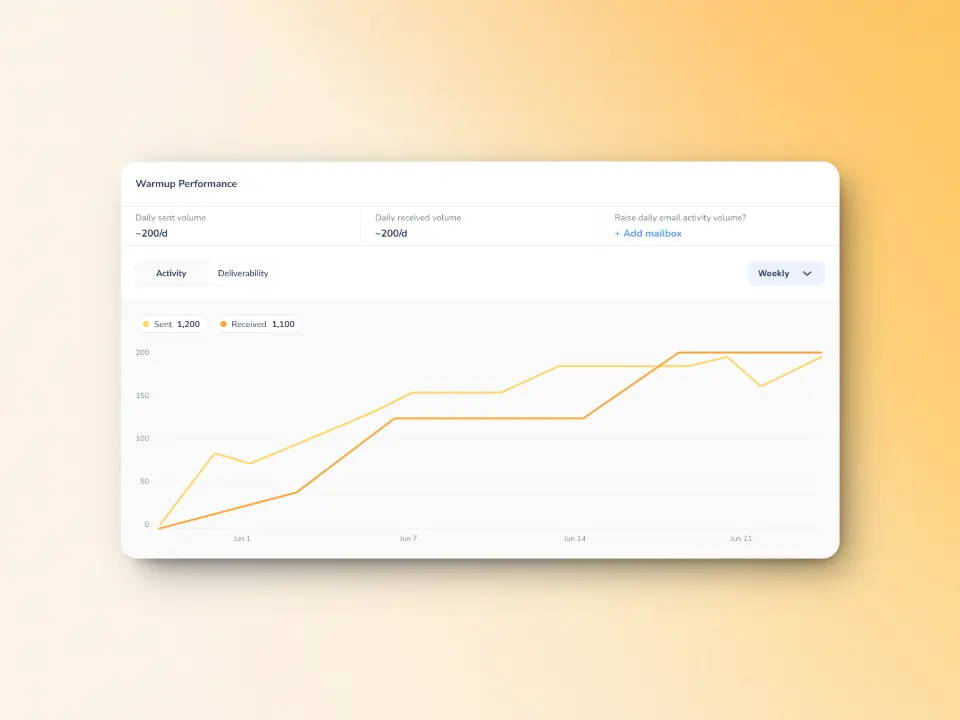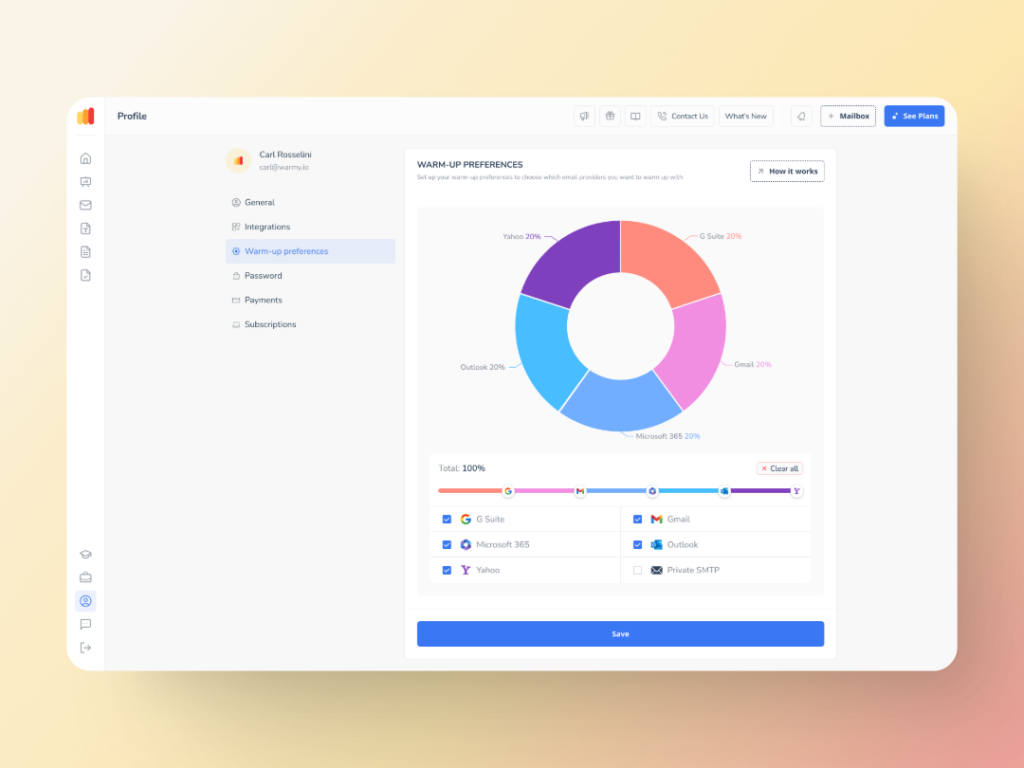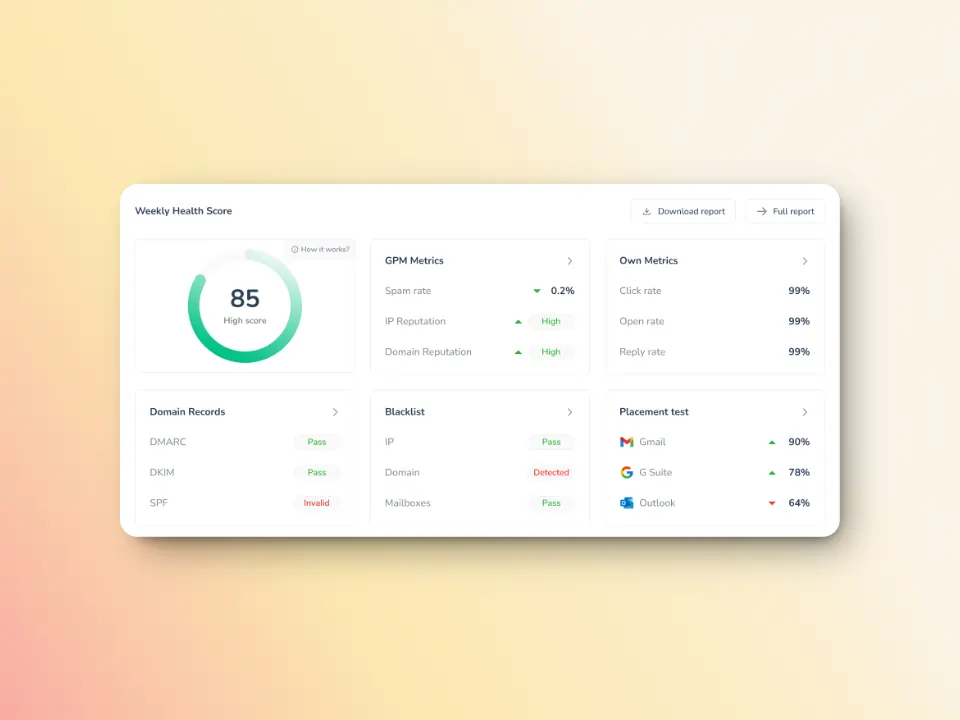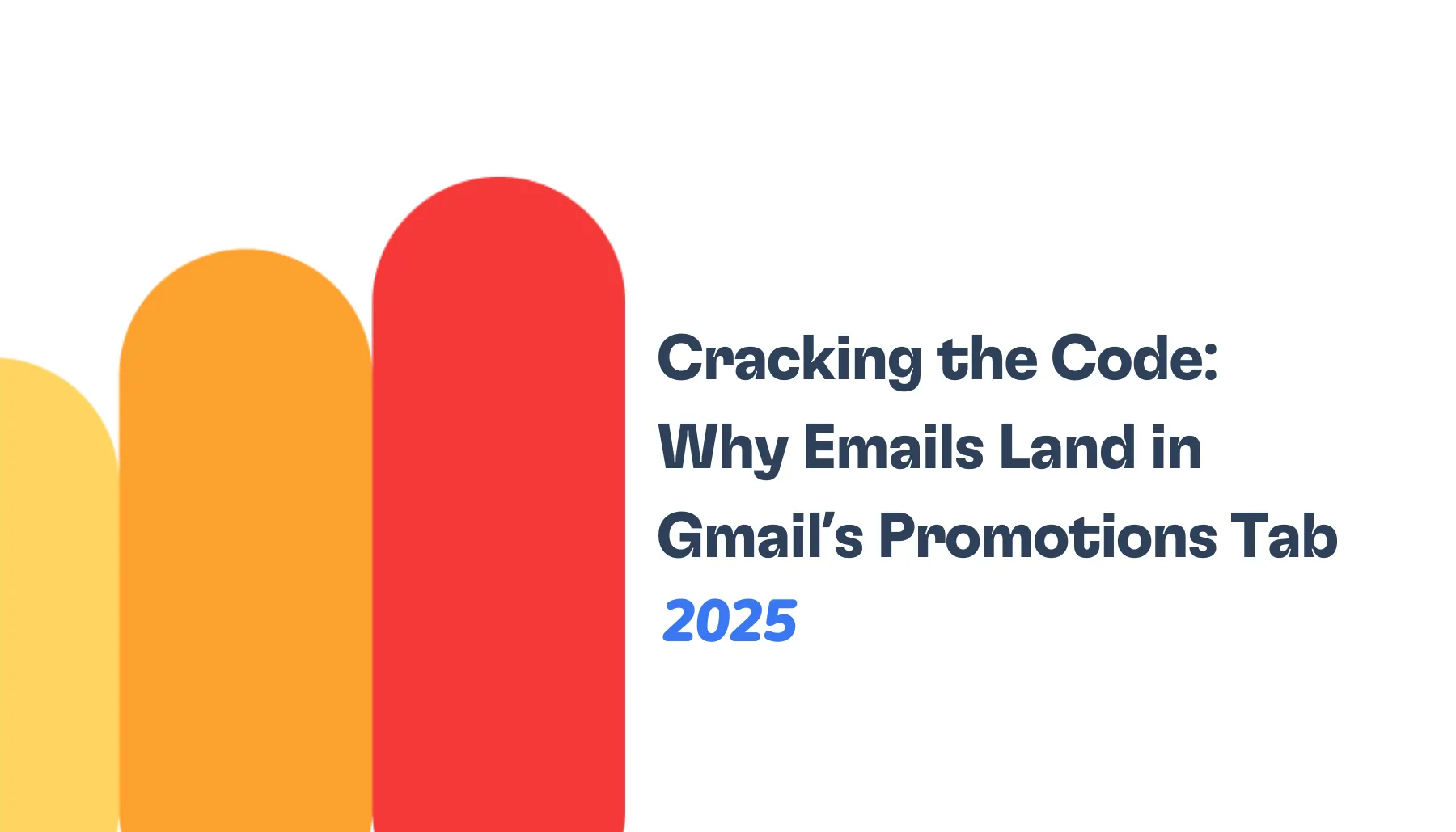In the fast-moving world of ecommerce, competition can be tough. With the market revenue expected to reach US 4.32 trillion in 2025, the numbers speak for themselves. Ecommerce is here to stay. It’s already a huge part of people’s everyday lives.
If you’re trying to sell more and increase customer lifetime value for your ecommerce store, having an email marketing program is essential. Email marketing offers the highest return on investment of any digital channel, so it’s not surprising businesses invest a good amount in it.
In this guide we are going to share email marketing tips that will enable ecommerce businesses to grow and scale. From better understanding customer segmentation and writing mouth-watering cart abandonment emails to making the most out of automation and A/B testing, these few simple strategies will let your store’s sales potential out of its cage.
Are you ready to take your email marketing to the next level and experience real, measurable growth for your online store? If so, you’re in the right place.
Why email marketing is essential for ecommerce businesses
Here are several advantages that contribute to making email marketing one of the most effective marketing channel for ecommerce companies:
- A direct line to your customers: Email allows you to get your message directly in front of a shopper (in their inbox) without having to fight social media algorithms or pay for them to see your ad.
- Gives a high ROI (Return on Investment): For every $1 spent on email marketing, you can earn an average of $36 in return.
- Customizable customer engagement: Email allows business owners to tailor messaging based on customer behavior, preferences, purchase history, etc.—thereby helping in boosting open rates, engagement and conversions.
- Encourages repeat purchases: Email nurtures existing customers by promoting loyalty programs, exclusive deals, and product recommendations, increasing customer lifetime value.
- Drives traffic and sales quickly: Flash sales, seasonal promotions, and limited-time offers sent via email create urgency and boost immediate purchases.
- Easy to measure and optimize: Email marketing platforms platforms show you open rates, click rates, conversion tracking and dozens of other relevant statistics so that you can optimize your campaigns over time.
9 essential email marketing tips for ecommerce success
It’s a big misconception and understatement that email marketing is all about sending newsletters and promotions. It’s a strategic tool that helps ecommerce businesses perform across the entire customer journey by helping build relationships, increase sales, and improve customer loyalty.
Implementing the right tactics can transform your email campaigns from generic blasts into personalized, high-converting communications. Below are essential strategies that every ecommerce business should master to achieve email marketing success.
1. Use segmentation to send targeted and relevant emails
This is when email marketing success starts happening: when you can make it personal at scale. Once you know who your customers are, what they care about, and what they’re doing, you can craft messages that click and stimulate action. Segmentation is one of the best ways to achieve this.
Segmentation enables email to deliver relevance and engagement by segmenting groups of customers according to specific criteria. According to DMA Insights, segmented and targeted emails generate 58% of all revenue. Additionally, a study by Klaviyo revealed highly segmented lists generated more than 3x the revenue per recipient of unsegmented lists.
Common segmentation approaches include:
- Behavioral segmentation (browsing or purchase frequency): You can create different segments based on specific behaviors. For example, one segment can be customers who have already bought from you three times. Another segment can be customers who bought a specific item.
- Demographic segmentation (location, age, gender): Tailor offers to local events or age-specific products. For example, there can be a segment for females only. Then you can send special promos for events like Women’s Day or Mother’s Day.
- Engagement-based segmentation (active vs. inactive customers): Send win-back campaigns to inactive subscribers while rewarding active ones.
🔖 Related Reading: Tools for Segmenting the Customer Base
Example scenarios:
- A fitness apparel store targets subscribers in colder climates with winter gear promotions while offering summer items to customers in warmer regions.
- An online apparel store segments customers into groups based on gender and purchase frequency. Men who frequently buy casual wear receive emails showcasing new arrivals in men’s casual collections, while infrequent shoppers get re-engagement offers.
2. Personalize your email campaigns to drive engagement
“Spray and pray” is another misconception people have about email marketing—which is simply sending the same message to every contact in an email list. But when it comes to ecommerce email marketing, combining segmentation strategies with personalized content can reap rewards.
Research shows personalized emails deliver six times higher transaction rates. Personalization goes beyond using the customer’s name. It means ending content, offers and product recommendations that are an echo of the recipient’s tastes and behaviors.
Some tips to personalize effectively:
- Product recommendations based on purchase history: Suggest products similar to previous purchases or complementary items.
- Personalized subject lines and email content: Use dynamic fields to tailor subject lines and copy that reflect customer interests. Check out these tips for subject lines that work.
- Dynamic content blocks for different segments: Customize sections within a single email to show different offers or products depending on the recipient’s segment.
Example scenario:
A beauty brand sends a product launch email where skincare customers see products related to skin hydration, while makeup customers receive information about new lipsticks—all in the same campaign.
3. Recover lost sales with effective cart abandonment emails
Cart abandonment is a major challenge for ecommerce businesses, with nearly 70% of shoppers leaving without completing their purchase. Sending targeted cart recovery emails can recover a significant portion of these lost sales—in fact, abandoned cart flows drive the highest average revenue per recipient at $3.65.
Some reminders on how to tackle recovery of sales.
- Figure out why customers are abandoning their carts. There are many factors why cart abandonment happens. Rule out technical issues, dissect your transaction process, and review your payment options.
- Craft a compelling cart recovery flow. Use clear messaging, images of the abandoned products, and strong calls-to-action (CTAs). Send the first email within an hour, followed by reminders 24 and 72 hours later if the purchase remains incomplete.
Example scenario:
An electronics retailer sends an abandoned cart email featuring the exact headphones the shopper left behind, includes a limited-time 10% discount, and a “Buy Now” button linking directly to the cart.
4. Take advantage of seasonal promotions and one-time sales
By setting a finite sales period, such as the holidays etc., you create a sense of urgency that leads to fast purchases. Sync your email sendings and promotions with popular shopping times to increase sales.
How to leverage seasonality:
- Plan your email calendar around key shopping seasons. Create campaigns for holidays like Black Friday, Cyber Monday, Christmas, and back-to-school.
- Leverage urgency and scarcity to drive transactions. You have phrases such as “Only 24 hours remaining” or “Limited stock” that push people to decide more quickly!
- Feature your special deals and offers. Offer special promotions only available to email subscribers to increase engagement.
Example scenario:
A home goods store launches a “Spring Refresh” campaign with a countdown timer and exclusive 20% off for email subscribers, driving sales during a typically slower season.
5. Integrate loyalty programs into your email strategy
Rewarding loyal customers keeps them engaged and increases repeat purchases. Email is a perfect marketing tool to promote your loyalty program and encourage sign-ups.
Tips for effective integration:
- Encourage sign-ups via email. Use welcome emails and regular reminders to invite customers to join your program.
- Reward customers with personalized offers. Send birthday discounts, points reminders, or tier-upgrade notifications.
- Promote VIP-only sales and early access. Make loyal customers feel special with exclusive perks communicated through email.
Example scenario:
An online pet supply store sends monthly emails updating customers on their points balance, with personalized coupons based on their pet type and purchase history.
6. Automate your email marketing efforts for efficiency and scale
Automation saves time and ensures timely, relevant communication with customers at every stage of their journey. Plus, automated emails have 52% higher open rates and 2,361% better conversion rates compared to regular campaigns. So if you want a slice of this revenue pie, you’d better start setting up email automation.
Here are some automation ideas to implement:
- Set up a welcome flow and email series. You only get one chance to make a first impression—so make it count! Whenever you acquire a new email address to your list (be that a new customer, someone who has subscribed, who has downloaded your app, who has visited your site, or your landing page), use that moment to introduce your brand and products through a series of onboarding emails
- Set up triggered emails based on customer actions. Send emails automatically after a purchase, a browse, or a milestone event. For example: if a customer visits a product and logs in but does not buy, this could be a signal to send an automated email asking if the customer is still interested.
- Automate post-purchase follow-ups and reviews. Request feedback, cross-sell complementary products, and nurture loyalty. With email marketing automation, these things can now be done behind the scenes. You don’t need to survey customers manually anymore.
Example scenario:
A subscription box service sends a welcome series when customers sign up, then automatically follows up after delivery with a feedback request and a referral incentive.
7. Maximize performance with A/B testing
The more you test different parts of your marketing emails, the better you can see results and find what works best for your target audience—creating a more favorable outcome going forward.
Q: What is A/B Testing?
A: A/B testing is the process of comparing two versions of an email (or any other marketing content) to determine which one performs better by using certain metrics such as open rates or click-through rates. This enables marketers to optimize their campaigns on data.
For instance, you can A/B test subject lines as well as send times and call-to-actions. It’s important to test each of these to achieve the best open and click rates for your campaigns.
Example scenario:
An online bookstore tests two subject lines — one with a discount mention, one with a new release highlight — and chooses the better performer for the full campaign.
8. Ensure compliance with email marketing laws
Staying compliant protects your brand reputation and builds customer trust.
Important compliance steps:
- Implement GDPR requirements for ecommerce marketing emails (This is very important if you are targeting customers based in the EU)
- Review CAN-SPAM Act basics and best practices (This will also help improve your US deliverability.)
- Don’t forget to include clear and easy unsubscribe options in every promotional email
🔖 Related Reading: Email Marketing Compliance Checklist for US Market is an essential read if you’re targeting US customers.
Example scenario:
A European online jewelry retailer adds GDPR-compliant consent checkboxes on sign-up forms and clearly lists unsubscribe links in all emails.
9. Monitor and improve your email deliverability
Ensuring your emails consistently land in your customers’ inboxes rather than their spam folders—is critical for the success of your email marketing campaigns. Good deliverability improves open rates, engagement, and ultimately sales.
Key practices include:
- Maintain a clean email list. A clean list signals to email providers that you are a responsible sender, which increases your chances of inbox placement.
- Use warm-up tools and authenticate your domain. Setting up authentication protocols like SPF, DKIM, and DMARC verifies your identity as a legitimate sender. Additionally, using email warm-up tools gradually increases your sending volume, building trust with email service providers and avoiding sudden spikes that can trigger spam filters.
- Watch your spam complaints and bounce rates. Monitor the number of recipients who mark your emails as spam or how frequently emails are returned undelivered. High complaint rates will hurt sender reputation and help decrease deliverability.
Example scenario:
A small electronics retailer uses an email warm-up tool to gradually increase sending volume on a new domain, ensuring high inbox placement rates from the start.
How Warmy can help maximize your ecommerce email marketing results
We’ve heard countless tales of ecommerce businesses dedicating time, effort and money creating awesome emails—only to realize they’re consistently ending up marked as spam.
Running successful email campaigns requires more than just great content. It demands a strong sender reputation, consistent deliverability, and ongoing optimization. Warmy.io offers powerful tools designed to help ecommerce businesses build trust with inbox providers and connect effectively with customers.
Here’s how Warmy can support your email marketing efforts and boost your results.
Know where you stand with a free deliverability test
It’s important to know how well your emails perform in the inbox before you begin any campaign. Warmy’s free deliverability test checks where your emails arrive across the big players like Gmail, Outlook, and Yahoo. This knowledge allows you to identify potential issues before they become problems and take corrective steps to increase your email placement.

Build credibility and reputation with the AI-powered warm-up tool and advanced seed lists
Warmy’s automated warm-up gradually increases your email sending volume while simulating real human interactions. This process establishes your domain and IP reputation with providers, reducing the risk of your emails landing in spam. By using authentic interactions, Warmy helps you build a strong foundation for successful ecommerce campaigns.

Warm’s advanced seed lists are made up of genuine email addresses that simulate real engagement—emails are opened, read, and clicked. If an email goes to spam, it is manually removed and marked as important to improve future deliverability. Using these seed lists enable ecommerce businesses to maximize their deliverability potential before executing large scale campaigns.
With the new Warmup Preferences feature, ecommerce businesses can further customize the warmup process. Senders can customize the warmup distribution across different providers and choose if they want to use B2B or B2C customers for engagement patterns to tailor the behavior and insights to their business type.

Improve your content with the Template Checker
Even well-crafted emails can be flagged as spam due to certain words, links, or formatting. Warmy’s Template Checker scans your email content for common deliverability issues, allowing you to optimize subject lines, copy, and design before sending. This helps ensure your messages reach your customers’ inboxes every time. It now has a Chrome Extension too so you can edit your emails as you daft them.
Continue to keep a watchful eye on your data with the Domain Health Hub
Keep an eye on your domain’s overall health with Warmy’s Domain Health Hub. It tracks important metrics like SPF, DKIM, DMARC status, blacklist presence, and bounce rates in real time. This proactive monitoring helps you maintain a strong sender reputation and quickly address any issues that could affect your deliverability.

Take your ecommerce email marketing strategies to the next level
Unlock the power of email marketing to grow your ecommerce business! Implement these proven tips to boost conversions, enhance customer retention, and create meaningful connections with your shoppers. Book a demo with Warmy today and start your journey.











